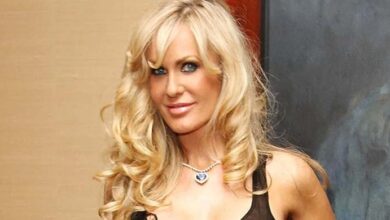King Charles, 75, Appears ‘So Thin’ & ‘Weak’ in Easter Appearance amid Cancer Battle
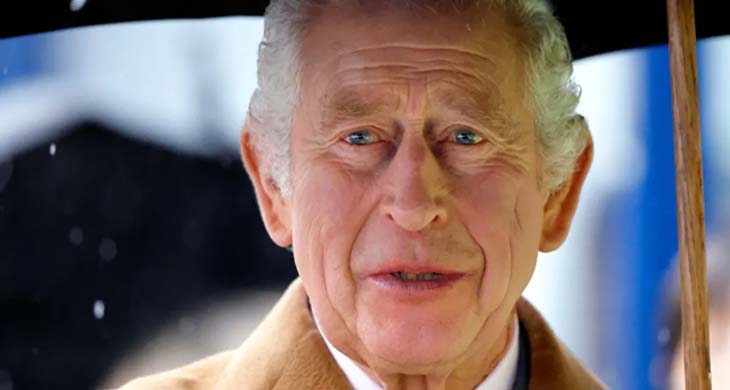
King Charles, alongside Queen Camilla, attended the Easter Sunday church service at St. George’s Chapel in a moving appearance that not only showcased his resilience but also elicited a spectrum of reactions from social media users.
King Charles took part in leading the royal family’s Easter church service on Sunday, which marked his first major public appearance since being diagnosed with cancer.
King Charles’ recent appearance sparked varied reactions among social media users. A netizen commented, “He looks weak,” while another stated, “He looks so thin.” One observer ominously noted, “It’s only a matter of time for him.”
However, not all comments were somber. “He looks good. A little thin but good,” one remarked, capturing a sense of hope. Another chimed in, “He looks better.” Other social media users also celebrated seeing Charles waving to supporters, smiling, and emanating positivity.
Many expressed joy at seeing the King in public again, underscoring a widespread admiration for his courage. Queen Camilla, too, earned praise for her steadfast support during King Charles’ challenging times.
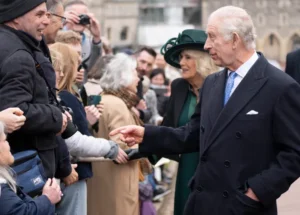
The community’s empathy extended beyond the King and Queen. Following the recent revelation of Princess Kate’s cancer diagnosis, netizens also shared their heartfelt wishes for her speedy recovery.
King Charles’s presence at the Easter Sunday service came after he was notably absent from the Maundy Thursday services, a significant event in the royal calendar. Despite not attending in person, he conveyed his thoughts and well-wishes through a prerecorded message that was played during the service.
In this message, King Charles lauded the recipients of this year’s honors for their extraordinary acts of kindness and lifelong dedication to serving their communities. He described these individuals as surpassing the ordinary expectations of duty.
The King also reminisced about his coronation.”This act of worship, here in Worcester Cathedral, reminds me of the pledge I made at the beginning of the Coronation Service—to follow Christ’s example ‘not to be served but to serve,” he shared, affirming his commitment to this ideal wholeheartedly.
King Charles has been making intermittent public appearances, which seem to be influenced by his ongoing cancer treatment. As reported on March 28, the King, dressed in his customary blue suit and tie, was seen departing Clarence House in his limousine, heading to an undisclosed location. As images of him circulated online, his notably red hand sparked a flurry of speculation and concern.
The appearance of his hand led to an immediate reaction on social media, with various individuals offering their interpretations of the cause.
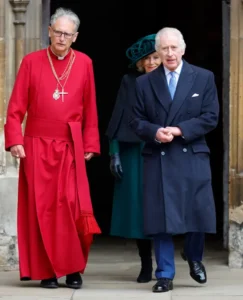
“That right hand- Sure hope it’s just the glare from the car window,” one person noted, expressing hope for a benign explanation.
Yet, another countered, “Unfortunately, no, it is not the glare. Those are chemo reactions to the skin,” suggesting a more serious underlying health issue while a third inquired directly, “Radiation burns?”
Observations and comparisons continued, with a fourth commenter remarking, “He’s always had sausage hands though, but it is rather red…” Some drew parallels with the late Queen Elizabeth, observing, “It reminded me of the late Queen’s hand.”
The speculation extended to deeper worries about the King’s overall health. “Gosh… Sadly he doesn’t look well in that picture does he? His hand looks so red,” wrote one concerned observer.
Another went further, speculating on the severity of the King’s condition, tweeting, “#KingCharles looks gravely ill. Lost loads of weight and looks sickly around the eyes and mouth, even his infamous swollen red ‘sausage’ fingers aren’t red or swollen anymore. I think they are hiding the fact that he’s terminal.”
The rapid spread of these observations and the resulting discourse underscore a deep public interest in the well-being of the monarch, with speculation ranging from simple concern to grim conjecture about his health.
We reported the news that the appearance of the king’s hands is a cause for concern.

Social media users quickly expressed their concern and shock at the appearance of King Charles III’s hand after observing a shared snapshot of him taken last December. One user stated the hand “doesn’t even look like his hand,” a sentiment echoed by several others, reflecting a sense of alarm among the public.
The discussion turned to speculations about the King’s well-being, with a comment suggesting he has “serious health issues” based on the photo. Another user mentioned the possibility that Charles III is “clearly not being treated for some sort of illness.”
In an intimate behind-the-scenes moment, King Charles III lightheartedly referred to his own fingers as “sausage fingers” during Coronation rehearsals. This comment elicited a tender response from Prince William and was caught on camera for the BBC documentary showcasing the year leading up to the King’s coronation.
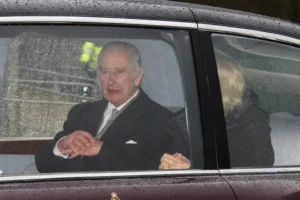
The King’s self-deprecating humor was on display as he joked with Prince William, who was assisting him with a ceremonial robe. King Charles reassured his son not to worry about the difficulty he faced, attributing it to not having “sausage fingers” like himself, a moment highlighting their warm father-son relationship amidst the grandeur of royal duty.
Dr. Gareth Nye, from the University of Chester, clarified that King Charles’s swollen fingers are not signs of major health concerns but are more likely a symptom of aging. Dr. Nilanjana Bose, a rheumatologist from Houston, Texas, also indicated that the condition of his hands might be normal for him, without any underlying disease.
In an era that demands resilience and adaptation, the King has made the prudent decision to step back from public-facing duties, prioritizing his health above all. This retreat from the public eye has necessitated a shift in royal responsibilities, with Camilla stepping forward to shoulder the weight of these engagements.
Amidst the recent sighting of His Majesty departing Clarence House, with a noticeably red hand, the Queen was seen engaging with the public, expressing gratitude for the outpouring of messages directed towards the Princess of Wales.
Her ensemble for the day, a tasteful combination of a brown leopard print blouse by Fiona Clare, a brown suede skirt, and a camel top stitch coat by Anna Valentine.
She accessorized with two distinctive bumble bee brooches — one her own and the other a cherished belonging to the late Queen Elizabeth. This public appearance highlighted her sense of duty and showcased the royal family’s enduring connection to its matriarchal lineage.
Over 2,000 people came to witness the Queen Consort in what was her first public engagement since the announcement concerning Kate’s health. “She’s got a lot on and it’s a big thing – you think it’s an easy job but it must be very, very tiring,” onlooker Joanne Morris said.
The King’s conspicuous absence will be noted across the royal Easter festivities this year. In lieu of his attendance, a deeply personal Easter message was broadcast during the Royal Maundy Service at Worcester Cathedral.
This pre-recorded message, delivered to the congregation in his stead, resonated with heartfelt emotion and a profound sense of duty. In his speech, his majesty articulated his sadness at being unable to partake in the Maundy Service, an event he holds dear for its embodiment of Christian service and humility.
The King praised the 150 individuals chosen to receive the Maundy money, recognizing them as exemplars of selfless community service. This act of worship, as Charles highlighted, served as a poignant reminder of his coronation pledge to emulate Christ’s example of serving others.
His message concluded with a prayer, hoping for the continued inspiration of Our Lord’s example to fortify and uplift all communities.
As the King continues his treatment, his words stand as a testament to the enduring values of compassion, service, and resilience that define the monarchy’s role in modern society.
In the wake of Buckingham Palace’s announcement that King Charles had been diagnosed with an undisclosed form of cancer, public concern for the monarch’s health has surged.
Adding to the anxiety was the noticeable step back the Queen previously took from her royal duties, opting to spend more time beside her husband. This move, while understandable, sparked speculation and worry among the public and media alike.
In this climate of heightened concern, the internet became rife with rumors about the King’s health and, more alarmingly, about his demise. A picture from 2018 showing King Charles at Tretower Court in Crickhowell, Wales, unexpectedly became the center of speculation when it was repurposed in social media discussions regarding the King’s health.
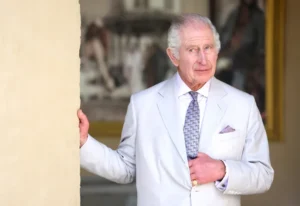
The foundation of these rumors was an unverified document that appeared online, mimicking the style of an official Buckingham Palace statement, declaring, that The King had passed away unexpectedly. The document, stamped with a date and purporting to be from royal communications, led to widespread confusion and concern.
However, this claim was quickly addressed and debunked by reputable sources, thereby quelling the rumors and highlighting the importance of verifying information before sharing it.
The speculation around King Charles’s health and the unfounded rumors of his passing have shown how quickly misinformation can spread, particularly in times of uncertainty. The public’s reaction—ranging from concern for Queen Camilla’s well-being to speculative commentary on the King’s health—reflects the deep connection many feel towards the royal family.


